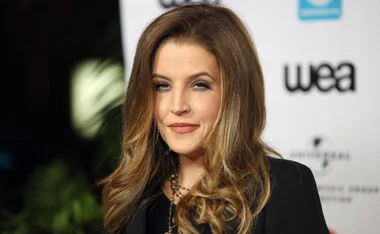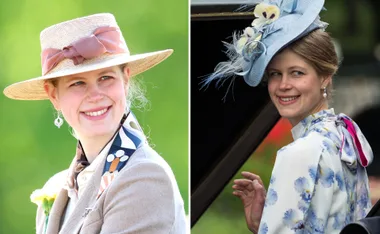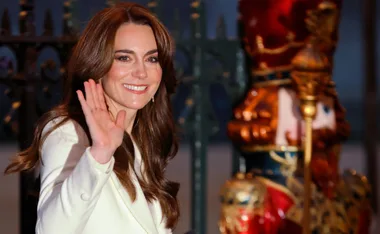Three Australian children go missing from the same small town and nobody is ever held responsible for their deaths. Reading that, you’re probably thinking, “Yes, I remember – that was the Beaumont children.”
Yet, no, this story isn’t about the Beaumont children. It’s about three quite different children, who went missing from the town of Bowraville on the NSW North Coast in the early 1990s.
Unlike the Beaumont children, these three children – Colleen Walker, 16, Clinton Speedy-Duroux, also 16, and Evelyn Greenup, four – did not disappear without a trace. The bodies of two of them – Clinton and Evelyn – have been found, as have Colleen’s clothes, bagged and weighed down with rocks and the bones of a dog in the Nambucca River, so there is little doubt that she, too, is dead.
The families – and some police – believe the children were victims of the same serial killer. That’s something that would normally fire the public’s imagination, but despite the media’s best efforts to whip up interest, it hasn’t happened in this case. It’s worth asking why. It could be because we’ve all watched a few too many crime shows. We expect the victims of serial killers to have some features in common (Ivan Milat liked to kill backpackers, Jack the Ripper went after prostitutes and so on). The three victims from Bowraville don’t fit into a neat box: one was a 16-year-old girl; one was a 16-year-old boy who looks in some photographs more like a man, with his stocky good looks, his moustache and his job in the local tannery; and one was a four-year-old child.
What holds them together? All went missing from the same town of just 900 people, in the same five-month period between September 1990 and February 1991. All were known to each other. The two bodies and Colleen’s clothes were
all found in roughly the same area, either along a dirt road that leads down to the Nambucca River, or in that part of the river itself.
Also, all three victims were Aboriginal.
As a nation, we want to believe that race plays no role in matters of justice, but the data suggests otherwise. Aboriginal people are more likely to be arrested, less likely to get parole, more likely to be sent to prison and more likely to die there. No doubt, there are people who think that’s because of the way they behave, drinking and fighting all the time, but there’s a flipside. This crime, in which Aboriginal children are the victims, has gone unsolved for more than 20 years and there has been nothing like the effort, or the resources, that has gone into trying to find the Beaumont children, or indeed into tracking other serial killers.
Could it be that we don’t really care – or don’t care as much – about this case because the kids were black? Or that we feel more comfortable about turning a blind eye because of the way the families lived? Or, as Colleen Walker’s devastated mother, Muriel Craig, puts it, “I ask myself, would we still be sitting here if this were three white kids? And I know what the answer is.”
✽ ✽ ✽ ✽ ✽
Colleen Walker was just 16 years old when she arrived in Bowraville from her home in nearby Sawtell in September 1990. Bowraville was then a relatively small community of 150 Aboriginal people and about 750 white people, and the two groups didn’t really mix.
On one of her first days in town, Colleen attended a party under a big, old tree. There was plenty of alcohol and Colleen got very drunk. She didn’t leave the gathering until after midnight. She was supposed to meet two friends at the local railway station so they could catch the 3am train out of town. When she didn’t turn up, they left without her.
This was before mobile telephones. There was a bit of a culture in Bowraville of letting teenagers do their own thing. Drugs and alcohol were part of the mix. Colleen’s mum didn’t find out for two days that Colleen hadn’t caught the train. When she went to tell police that her daughter was missing, they asked her whether it was possible that Colleen had just “gone walkabout”. They didn’t really search for her at all.
On October 3, there was another party in Bowraville, not under the big tree this time, but in a house. One of the guests was Rebecca Stadhams. She was a young mum, with three children under the age of five. She got very drunk at that party. Halfway through the night, she dragged her kids, including four-year-old Evelyn, down to their father’s house to see if he could take care of them, but Billy Greenup was dead drunk, too, so she took them back to her mother’s house, where the party had been raging. Now it was dying down. Rebecca’s mum, Patricia, had shooed everyone way, saying it was time for the kids and everyone else to get to bed.
Rebecca took the kids inside and all piled into one bedroom to sleep. When Rebecca woke up the next day, Evelyn was gone. Rebecca didn’t immediately raise the alarm, telling police that she assumed that Evelyn had simply toddled off down the road to visit her dad, but when she caught up with him at the RSL later that day, Evelyn wasn’t with him.
Again, it was at least two days before a police search was mounted and it was somewhat cursory. The feeling among some police was that Rebecca had been drunk, so how could she know what had happened to the child? Child protection officers were sent in, to see whether anyone in the family could explain what had gone on.
Four months later, Clinton disappeared.
Like Colleen, he was only 16, yet he was partying pretty hard on the night of January 31, 1991, which was the last time anyone saw him alive. The difference this time was that Clinton’s body was found, not by police, who weren’t really looking, but by two men out searching for firewood in scrubby woods off the dirt track that ran down to the Nambucca River.
Clinton had a head wound and a pillowslip was found stuffed into his pants.
This was clearly a homicide. Police began to trace Clinton’s last movements. They knew that he’d been at a party with his Aboriginal girlfriend, Kelly Jarrett, the night before he’d disappeared. One of the other guests at that party was a 25-year-old white man, Jay Hart, who lived in a caravan on Bowraville’s outskirts. Hart is now middle-aged, married, with a couple of kids and a beer gut.
He uses a different name. In those days, he was a fat, young bloke with a job at the local tannery, skinning hides. Unlike other white folk, he didn’t mind hanging around the “Aboriginal” part of town, also called “the Mish” after the old Aboriginal mission. He often supplied the alcohol. He got drunk that night and invited Clinton and Kelly back to his caravan to continue drinking. Kelly told police that when she woke up the next day – still in the caravan – she felt groggy, like she’d been drugged. Her underpants had been removed. She couldn’t find Clinton, only his shoes.
Jay Hart wasn’t there, either. He had been seen driving around town at around 5am. He would later tell police that he had decided to drive to work, despite having organised to get a lift with another tannery worker. Then he came home to have a cup of tea, which is why he’d been spotted returning to the caravan, just before his lift arrived.
Police heard him out, but didn’t believe him: the pillowslip found stuffed into Clinton’s pants was from Jay Hart’s caravan. They decided to charge him with Clinton’s murder. Their theory was that he’d drugged Kelly so he could rape her. When Clinton woke up and tried to stop him, he’d hit him on the head, taken his body out in his car, dumped it and driven back to his caravan, all before dawn.
Jay Hart protested his innocence. He was awaiting trial when a fisherman snagged his line on Colleen Walker’s jeans in the Nambucca River. A search team went into the water and turned up two more bags of clothes. Eight days later, the remains of Evelyn’s body were also found. She had a head wound, too.
It was around this time that the theory that Jay Hart might be involved in all three murders began to form. Witnesses came forward to say that he’d been at the party with Rebecca on the night that she had become drunk and dragged her kids around to their dad’s. Rebecca’s mother, Patricia, remembered seeing Jay Hart hanging around, peeking in the windows after she’d tried to shoo everyone away. One of Evelyn’s “aunties” (not a real aunt, but a close female relative) said she had seen Jay Hart coming out of the bedroom where Rebecca and the kids eventually lay down to sleep. Patricia remembered hearing Evelyn crying and then a thump, then Evelyn falling silent. Rebecca told police she had felt groggy, like she’d been drugged, when she woke up – and her underpants had been removed.
Then people remembered that Jay Hart had been at the party with Colleen Walker on the night she disappeared as well. Witnesses said he had pestered her and maybe even followed her when she left.
A theory began to form. Jay Hart wasn’t a serial killer in the ordinary sense. He was a sexual predator. He was killing people who got in the way of rape. Police were on board. Having already charged Jay Hart with Clinton’s murder, they now charged him with Evelyn’s murder. All the evidence was circumstantial – nobody had seen Jay Hart kill anyone and he couldn’t actually be placed at the scene of any crime – which is why the families of the dead, including Colleen’s mum, wanted the evidence from all three cases to be heard together, but that kind of thing is hardly ever allowed; in all but the most exceptional circumstances, a case must be run on its own merit.
Jay Hart went to trial for the murder of Clinton Speedy-Duroux in February 1993. Three years to the day after Clinton’s body was found, Hart was acquitted. Without the so-called “tendency” or “coincidence” evidence from the other cases, the jury simply didn’t buy it.
The NSW Director of Public Prosecutions subsequently “no-billed” or dropped the case against Jay Hart for Evelyn’s murder.
That wasn’t the end of the matter. The families complained that police had botched the investigation. They wanted somebody to have another look. Years went by, during which much painstaking work was done. A strike force was formed, first under the management of Detective Inspector Rod Lynch, who worked on the Ivan Milat backpacker killings and later under senior homicide detective, Detective Inspector Gary Jubelin, who has worked this case for 15 years. They weren’t given the resources provided to other investigations (no experts have ever been flown in from overseas, for example, as happened during the investigation into the serial killings in Claremont, WA, during the 1990s). Still, they managed to find some new evidence, but NSW’s then Director of Public Prosecutions, Nick Cowdery, said it wasn’t sufficiently compelling and refused to send the matter back to the courts.
Undaunted, Gary Jubelin persuaded the NSW Coroner to hold an inquest, instead. Inquests aren’t like trials. There’s no burden of proof as such and all kinds of evidence can be heard. Coroner John Abernethy, who is now retired, weighed up all the different theories and, in 2004, came down on the side of the families, saying, “I am of the opinion that the circumstances surrounding the disappearance of Colleen Walker and the murders of Evelyn Greenup and Clinton Speedy have strikingly similar characteristics”.
Jay Hart subsequently found himself back in the dock, this time charged with Evelyn’s murder, but the waves of optimism came to nought. The case against Hart was still mainly circumstantial. Confusing
matters further, there were witnesses who said they’d seen Evelyn wandering alone, after she supposedly disappeared from the house. Jay Hart was acquitted, meaning he has now been charged with the murder of two of the missing children and also cleared of both of them.
Still, suspicion lingers – just last month, Jay Hart was confronted in a shopping centre car park by a team from the Seven Network’sToday Tonight, wanting to know whether he had killed all three children from Bowraville. He was adamant, saying, “No, I did not.”
Jay Hart has always insisted upon his innocence. The families have never given up hoping that somebody will one day be held to account. In recent years, they’ve received assistance from Larissa Behrendt. She’s a lawyer, academic, author and now a filmmaker, intent on bringing the story of Bowraville to a wider audience.
“I have known about the case since I was at university in 1991,” Larissa told The Weekly. “I was an Aboriginal law student, the Royal Commission [into Aboriginal deaths in custody] was on and it was showing Aboriginal people were being locked up for misdemeanours and here we had the murder of three Aboriginal kids, and the legal system couldn’t put anyone away. For a young Aboriginal lawyer like me, it’s struck a chord.”
Two years ago, Larissa began filming the testimony of the families for a documentary tentatively titledThree Lost Children. In the process, she has come to admire their quiet dignity.
“Their lives have been shattered, but this isn’t a lynch mob,” she says. “You can feel the emotion, but they aren’t saying, we have to go and get [whoever it is who did this]. Their anger is directed at the legal system as it is at any perpetrator. How can there be a case like this, where no proper search is even ever conducted?”
Larissa submitted her film to both Melbourne and Sydney Film Festivals, to the ABC and to NITV, which is part of SBS. Meanwhile, the families suffered another blow. On February 8 this year, the NSW state Attorney-General, Greg Smith, refused an application to send the matter to the Court of Criminal Appeal for a second look. There are some politics bubbling away in the background. Greg Smith was Nick Cowdery’s deputy when Mr Cowdery knocked it on the head last time. Adding insult to injury, having made the families wait for 20 months for his decision, Greg Smith didn’t bother to tell them personally that they wouldn’t be getting another go. Favoured journalists were briefed before the families were even told. This may be a justice matter, but that’s a kind of politics, too – it’s called massaging the message.
✽ ✽ ✽ ✽ ✽
Colleen Walker’s mum, Muriel, has lived in the same, neat-as-a-pin house for 35 years. She finds it difficult to talk about her missing daughter, in part because the grief is still raw after 20 years, but also because her culture discourages any mention of people who have “passed”.
“I don’t tell people my suffering,” she tells The Weekly. “But it feels sometimes like it doesn’t matter what I do, we’re not going to get anywhere. That’s hard to accept.”
She is reluctant to use the race card, saying, “I don’t say people are thinking, these are just black kids, but they did treat us like we just let our kids go walkabout.
“He [Attorney-General Greg Smith] could have taken it back to court and he didn’t, and he didn’t ring us personally. The media found out before we did. I don’t like to make comparisons, but we have asked people from government to come and see us and we don’t get replies. When Daniel Morcombe went missing, they had the Queensland Premier marching with them. I don’t say anything bad about the Morcombes. I’m glad they are having their trial. But I see the difference.”
In a statement to The Weekly, Greg Smith said the obvious, “The death of the three children is tragic … I feel terrible for their families and understand why they are seeking a retrial” – but no, he wouldn’t give them one because, in his view, there was “no reasonable prospect of success”.
Australians worry endlessly about the state of relations between black and white Australia. Everyone wants things to improve. Then we see a case like this – three children dead and the families waiting 20 years for an answer only to be told – yet again – sorry, but there isn’t one. Those children were murdered. Two had suffered blows to the head; clothes from the third were bagged up and tossed in a river. Somebody knows something.
Maybe Colleen’s mum is right – for all the billions of dollars spent and for all the formal apologies given, maybe things between black and white Australia haven’t changed at all.
This story was originally published in the April 2013 issue of The Australian Women’s Weekly.
Newsletter conversion description. Get the latest in your inbox.






































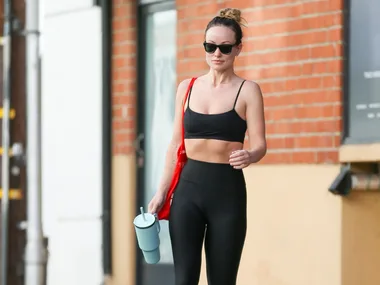

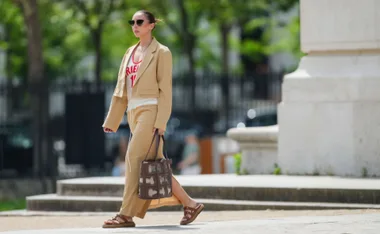





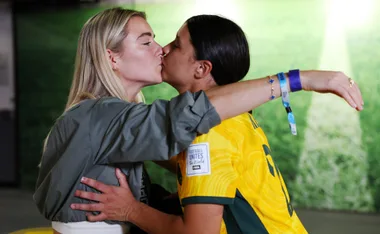





.png?resize=380%2C285)
.jpg?resize=380%2C285)











